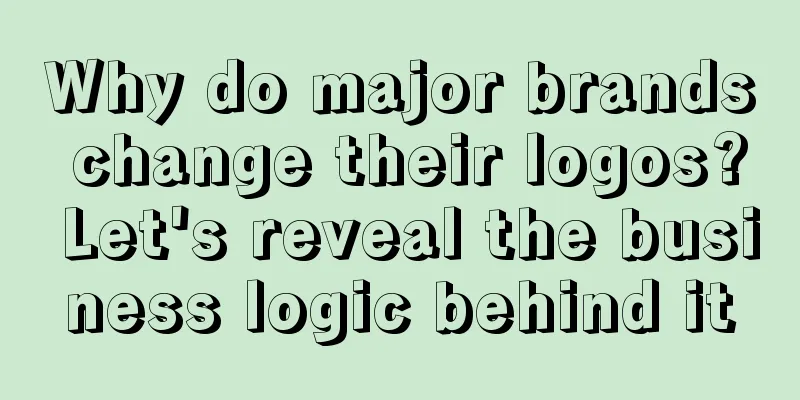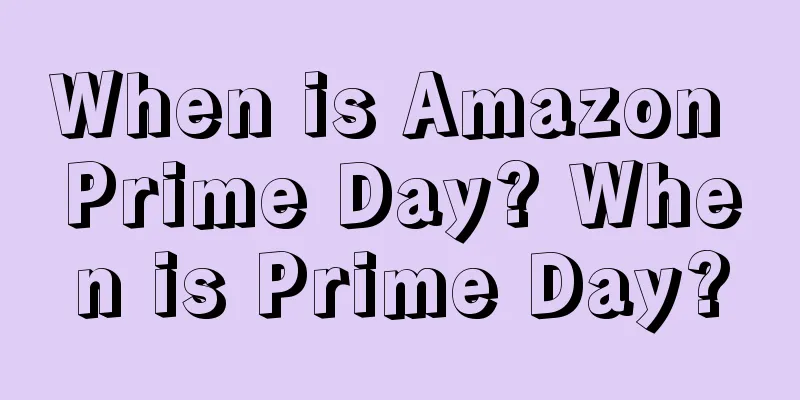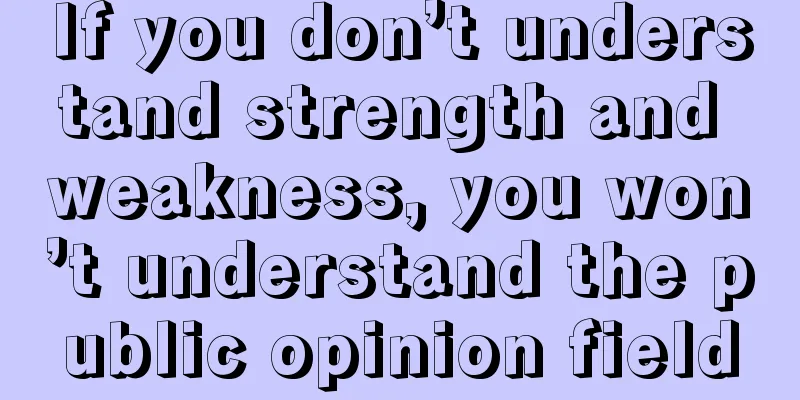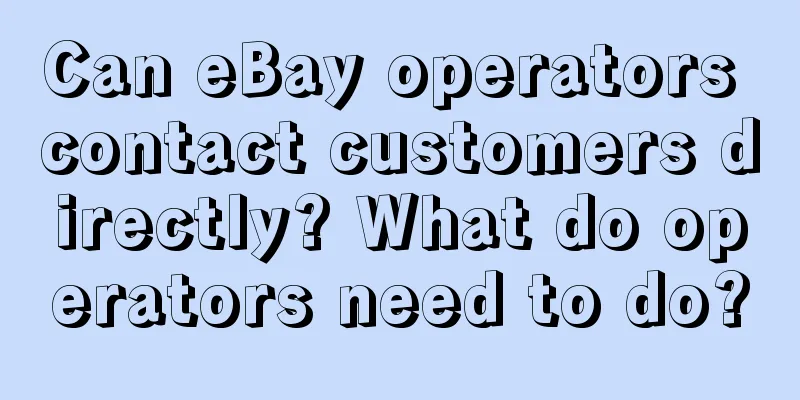What is a "sense of co-creation" brand? Be in awe of great thinkers and explorers (1)
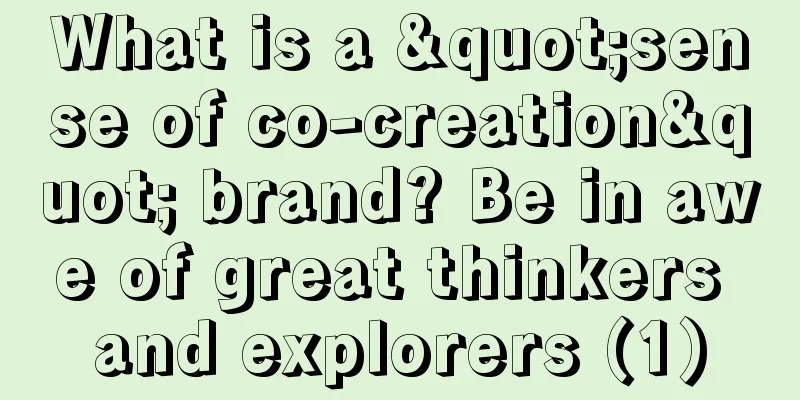
Change and innovation require passion, imagination and an adventure manual, and the "Sense of Co-creation" series may be it! When exploring the beginning of the "sense of co-creation", we do not start from trends and digitalization, do not limit ourselves to users and user needs, do not think about challenges and anxieties, do not cite new consumption and classic cases, but start with the definition of "brand". If we can eliminate some of the traditional perceptions of the brand, perhaps we can make more room for a sense of co-creation. The structure of this article follows the evolution of theories in different eras to answer the questions “What is a brand?” and “How to brand?”:
Now, enter our grand yet exquisite brand journey! Chapter 1: Be in awe of the great brand thinkers! We start with a detailed question of "what a brand is not and what a brand is" : 1. What is not a brand?What is not a brand? — A brand is not a logo, an identification system, a product, a founder, and most importantly, it is not a company. 1. A brand is not a logoThe word LOGO is an abbreviation of business logotype, which is a visual expression from the personalized logo vocabulary [logos means words in Greek]. Whether it is the letters of IBM, the check mark of Nike, or the Aquaman of Starbucks, they are trademarks and identification symbols, but they are definitely not brands. They are just "symbols" of a certain brand. 2. Brand is not a corporate image or identification systemCorporate identity CIS was formed in the 20th century, controlling corporate identity and brand trademarks, their standardized application in various scenarios, and maintaining consistent image output. Although Brand Identity (BI) is the first and foremost thing in building a brand, it can never be said that brand is brand identity, because brand CIS (BI&VI&MI) and consistency alone can never build a brand. Note: BI later evolved into brand identity prism and brand image. 3. Brand is not a product1985 was a watershed in marketing history and one of the most important symbolic events in brand history. Previously, all brand awareness was centered around “products” and was not separated from or equivalent to products. In 1985, Coca-Cola launched New Coke, which triggered an unexpected user boycott and fundamentally impacted the traditional brand concept. Since then, both brand theorists and entrepreneurs have opened up an independent living space for brands. In fact, as early as 1960, Steve King expressed in What is a Brand:
4. The brand is not the founder
Mr. Buffett once said, "It takes 20 years to build a reputation and only 5 minutes to destroy it." Always remember this and you will make different choices. Another equally wise quote: "It takes thousands of people to build a reputation, but one or a few can destroy it." Think about this, and you will still make a different choice." 5. A brand is not a companyFinally, let’s read the case of Peugeot in “Sapiens: A Brief History of Humankind”: Peugeot started out as a small family business in France, but is now a massive automaker with 200,000 employees worldwide, most of whom are completely strangers to each other. By what criteria can we say that Peugeot SA actually exists?
Even if Peugeot is dissolved, the brand still exists.
The Peugeot brand is just our "collective imagination". So, brands, like countries, ethnicities, and religions, are really our “collective imagination” ? 2. What is a brand? ——1.0@Industry and Commerce EraThe discussion on "What is a brand?" will be even more brain-burning. In different eras, brand founders, advertisers, marketers, and scholars have given different answers. There is no high or low, no right or wrong answer, but they inspire each other, merge with each other, and evolve comprehensively in each other's achievements. The following content is condensed from Professor Lu Taihong's "A Brief History of Brand Thought". As we all know, the development of commerce is a long process. Just talking about the phenomenon of branding, it appeared in China as early as the Shang and Zhou Dynasties and in Europe in the Middle Ages. The white skull and bone fork may be the world's first global brand recognition. Brands in the modern sense came into being in the late 19th century with the marketing efforts of such century-old companies as Budweiser (1795), Morgan (1799), DuPont (1802), Procter & Gamble (1852), Burberry (1856), Louis Vuitton (1854), Levi’s (1873), General Motors (1876), Coca-Cola (1887), Kodak (1888), Shell (1891), Geely (1901), Ford (1903), Harley-Davidson (1903), and Disney (1923). The word "brand" first appeared in 1922 and was merely a tool in marketing practice; later it became one of the strategic goals of an enterprise (one of the indicators of corporate strategy (Porter) is to build a brand image); and the specialization of brand research was not formally proposed until 1950, when David Ogilvy published "Products and Brands" in the "Harvard Business Review". Since Philip Kotler, the father of modern marketing, published "Marketing Management" in 1967 and systematically expounded on marketing, brand and marketing have always been inseparable. Therefore, in the past 100 years, in the questioning and exploration of "what is a brand?" and "how to brand?", concepts and theories have continued to be enriched and the boundaries have been continuously expanded. Unfortunately, brands are often confused with purpose, brand and method, brand and marketing. 1. What is a brand?
2. How to brand?"Branding" has followed the upgrading of cognition and practical exploration, and has also undergone countless evolutions: from identification-centered → sales-centered → communication-centered → customer relationship-centered. The methodology has developed into: unique selling proposition (USP) → positioning category proposition (PSP) → self-selling proposition (MSP) → integrated marketing communications (IMC) → brand sales (BSP) → experience marketing (ESP) → value innovation of "Blue Ocean Strategy" → brand prototype. Of course, there are also many management models: Brand Concept Management (BCM) - Brand Equity Five-Star Model (BE) - Strategic Brand Management (SBM) - Customer-Based Brand Equity (CBBE) - Brand Resonance Model (BRP). Different times have different starting points (enterprise-based, market-based, or customer-based), different angles (business genes or cultural genes), and different logic (rationality-dominated or emotion-dominated). Of course, brand concepts, goals, values, methodologies, content, etc. are different. Special note: Why do we still need to study and be familiar with these old-generation brand ideas in the digital age? Because these basic forces are still being applied and interpreted in daily brand creation. These basic principles represent the top ideas in brand thinking. They are highly superimposed forces, interdependent and mutually reinforcing. 3. What is a brand? ——2.0@Internet eraIn 2000, “bringing the distance closer” brought the PC Internet era of “The World Is Flat” to the fore.
Then a new melody of brand and marketing emerged - "brand relationship/relationship marketing" became the new ideological commanding heights. Different from previous perspectives such as brand identity, image, positioning and assets, "brand relationship" includes three major changes and shifts:
1. So, "what is a brand" and "how to brand"?This new story begins with Fournier (1998), the founder of the "consumer-brand relationship theory", Moniz (2001), the founder of the "brand community theory", Schmidt, the founder of the "brand experience theory", and MacLean and Park, the core scholars of the "brand attachment theory". They believe that brand refers to the relationship between the brand and the user , which includes the following three lines:
To put it in Chinese, "Birds of a feather flock together" - what brands users like depends on themselves, but also on the personality and meaning of the brand. Professor Lu Taihong put the evolution of the "customer-brand" relationship over time on a graph and found that users are gradually being placed in the main position and are becoming more and more important.
2. At the same time, those masters who keep pace with the times and look forward to the future began to upgrade the concept of "what is a brand".In 2014, David Aaker, the originator of brand equity, gave another exquisite answer to the definition of brand based on his 30 years of academic and practical training:
To put it simply: brand = identification + commitment + multiple values + experience + relationship. Philip Kotler also updated the definition of "brand" in the 16th edition of "Principles of Marketing" in 2016:
What’s more, Kotler believed in 2017 that today’s companies have lost the right to shape their brands, and brands are increasingly shaped by customers who can communicate with each other online. 4. What is a brand? ——3.0@Digital Era
From PC Internet to mobile Internet, it has only been 10 years. What has happened?
▲Time Magazine cover "YOU" in 2006 + Facebook's 500 million users in 2010 The exponential technology integration that beats Moore's Law has begun, including immersive experience and digital marketing, cloud computing and the metaverse, drones and new energy vehicles, low carbon and sustainability... Countless imaginations that were once out of reach are slowly unfolding before us. Through mobile Internet and intelligent algorithms, "digital" is aggregated into stronger creativity, and is added to every corner of life in a stumbling and passionate way, and of course it also empowers every brand. Former business giants and brands have either left the stage or lost their glory, including Kodak, Nokia, Sears, GE, and JWT; while Apple, Amazon, Google, Airbnb, Facebook, Uber, Tesla, TikTok, WeChat, Alipay, Meituan, Xiaomi, Huawei, etc. have emerged. The boundaries between brands and innovation have become blurred. They no longer belong to or are limited to an industry, a company, a product or a category. These companies/brands are more like a large platform, an ecosystem, or a large tribe. In addition, there is a type of brand called "DTC" in Europe and the United States, which is called "new consumption" in China. They are establishing themselves, rising up, growing in the wind, and leading the way. Warby Parker, Dollar Shave Club, Allbilds, Casper, Harry's, Everlane, Glossier, SHEIN, Manner, Sandonban, Perfect Diary, Huaxizi, Pop Mart, etc. ▲The picture is compiled from Internet data
They often achieve the same revenue and influence that those brands achieved in decades in just a few years. What did they discover, what did they value, and what did they do? In other words, in the digital age of navigation, what is the certainty of the uncertainty of "brands and branding"? 1. The logic of brand creation has changed again in digital marketing.The first is the prevalence of digital marketing, which includes three aspects:
These three points have made many of the DTC brands and new consumer brands mentioned above successful. Based on the change in the brand creation path, the logic of brand creation has also undergone tremendous changes:
Furthermore, the innovation of brand thinking occurred again, and a new theory called "co-creation and sharing" and "brand community" emerged. 2. The origin and evolution of the idea and theory of “co-creation and sharing”It took about 50 years for the brand concept of "co-creation and sharing" to be conceived and shine brightly. 1) Four great founders of the “co-creation and sharing” philosophy The digital age is filled with a galaxy of innovative figures, and there is a group of scholars who have gained insights and innovated new perspectives on branding and marketing from multiple dimensions including philosophy, evolution, business, and innovation. Peter Drucker - "The only purpose of business is to create customers." The idea of "creating innovative value for users" can be traced back to the insight of Peter Drucker, a pragmatic and visionary management guru, in his book "The Practice of Management" published in 1973 - "The only purpose of any business activity is to create customers." Drucker was ahead of his time. He probably didn’t know that fifty years later, people would bring together the principles he focused on - innovation, marketing and user-first - and with the support of Starbucks’ Howard Schultz and Amazon’s Bezos, form today’s “User Thinking 4.0”. James Carse - "There is only one infinite game." In his 1987 book Finite and Infinite Games, James Carse tells a new story about the world of competition from a philosophical perspective. How amazing:
Kevin Kelly - "1,000 True Fans" Then in 1994, futurist Kevin Kelly discussed in "Out of Control" the concepts that are emerging or popular today: mass wisdom, cloud computing, the Internet of Things, virtual reality, agile development, collaboration, win-win, symbiosis, co-evolution, online communities, network economy, etc. In 2008, Kevin Kelly proposed the "1,000 True Fans" theory: To be a successful creator, you don't need millions of fans. As a craftsman, photographer, musician, designer, writer, app maker, entrepreneur or inventor, you only need 1,000 true fans. True fans are defined as fans who buy any of your products. Clayton Christensen - "Innovation is about user progress, not products." Innovation guru and Harvard Business School professor Clayton Christensen made a startling claim in his 1997 book The Innovator’s Dilemma - the failure of leading companies has nothing to do with innovative technology, but rather is due to taking customer needs as the absolute standard and being too customer-oriented. In 2018's "Competing with Luck", he proposed the core of innovation - not satisfying users, nor products and focusing on competitors, but user progress, with the focus on progress. Perhaps, these are the certainties we have been searching for in the uncertainty of "brand and branding" in the digital age of navigation: innovation, co-evolution, infinite games, and user progress. 2) Four explorers and creators of the “co-creation and sharing” brand theory The exploration of brand and marketing masters is pragmatic and smooth. In 1966, Adler proposed the concept of "symbiotic marketing". The so-called "symbiotic marketing" means that two or more companies jointly develop marketing opportunities (perhaps the earliest cross-border theoretical research). Unfortunately, this theory never gained attention until 20 years later, when Kotler developed "symbiotic marketing" into value network marketing, which gained more attention. In 1996, Moore's "Business Ecosystem" theory In 1996, American professor JF Moore proposed "creating a business ecosystem" in his book "The Decline and Fall of Competition". Based on the theory of evolution, Moore proposed the unique insight that "interdependent species 'co-evolve' in an infinite cycle of interaction, playing an important role in the evolution of an ecosystem": in business strategy, "we cannot act alone, we must co-evolve." Moore's "Brand Ecosystem Strategy" includes the following keywords:
In 2000, Moniz and his "Brand Community" From 1995 to 2001, Moniz spent six years to complete and perfect his proud book "Brand Community", and became the originator of brand community. His definition of brand community is "a special social group formed based on the admiration of a certain brand, not restricted by geographical location"; and he advocates that customers and companies work together to create value. Brand Ape prefers the definition in "Tribe": a group of people who are connected to each other, led by a leader, and gathered together with the same ideas become a tribe, or a community. There are no customers, no management, no worship, but leaders, connections and common values. The three most successful cases are: Harley, which is centered on offline communities, Wikipedia, which is a co-creation collaboration model, and Airbnb, an online community innovator. In 2004, Prahalad’s “co-marketing” + “creating value with customers” The scholar who made the greatest contribution to the theory of "sharing and co-creation" is CK Prahalad (1941-2010). In 2004, he first proposed the concepts of "colaborative marketing" and "co-creating value with customers" (CCv) in his book "Competitive Future". He believes that future marketing should include:
Later, Porter, the father of competition theory, adopted a new academic perspective and proposed the important theory of "creating shared value" in 2011, moving from "competition" to "sharing". Later, the marketing godfather Kotler redefined marketing in the 16th edition (2016) - the process of establishing valuable and sustainable customer relationships by creating value for customers and " obtaining value from customers ." From 2005 to 2018, "Customer Immersion" supported by many great people In 2005, a new term "customer engagement CE" emerged. (Professor Lu Taihong translated it as customer engagement, while Brand Ape prefers to use "user engagement") As Professor Lu Taihong said, "user immersion and integration". "Immersion" means penetration and "integration" means cooperation and co-creation. This concept is the new coordinate for the huge changes in marketing and branding in the digital age. Because "user immersion" is different from "user experience", "user participation", "user attachment", and it is not CRM or membership marketing. It means that users and brands have become one. From 2005 to 2018, this concept has been supported by many marketing masters and has become a new brand concept:
From "symbiosis" to "ecology", from "co-creation" to "sharing", from "community" to "immersion", these ideas and theories have not only been successfully verified in the DTC brands and new consumer brands mentioned above, but have also gained new energy in the innovations of countless giants.
At this point, the status of "co-creation and sharing" and "brand community" in future brand theory is beyond doubt. 3. The “roots” and development logic of the evolution of “co-creation and sharing”.So, a new question arises: as a new force in branding, is “co-creation and sharing” a flash in the pan, or will it dominate for decades like “positioning”? This requires exploring the roots of the "co-creation and sharing" idea and the logic of future development. 1) The “Roots” of Evolution — Digital Natives Digitalization, like chaos, has given birth to a whole new kind of human being – digital natives. Whether it is the Millennials (1984-1995) who have become the social elite, or the mainstream Generation Z (born after 1995), these two generations have unexpectedly merged into one whole - the "digital natives" who are always online . Together, they have launched a "generational revolution" - integrating life into digitalization, rather than integrating digitalization into life. They have three unprecedented features:
Note: The characteristics of “digital natives” will be discussed in detail later. 2) Three “flips” in brand awareness Digital natives, coupled with causally ambiguous technologies and media that inspire and merge with each other, and social forms that continue to be decentralized, new "brand" ideas and cognitive reversals naturally occur. Flip 1: It is no longer the company that creates the brand, but the user. Brand is no longer just identification, symbol and promise, but more of a user's intuition about a product, service or company. Obviously, a brand is not what you say it is, but what the people who come into contact with it say it is. Flip 2: It’s no longer the company that owns the brand, but the users who derive meaning from the brand. The new generation of users want to have the right to decide what to produce and how to produce, and are willing to roll up their sleeves to do something (share content and co-create products). The power of the brand is no longer concentrated in companies and leaders. In a very real sense, fans, super users and communities will become co-owners of the brand . Flip 3: " Consumers " will be eliminated, and having members who make common progress is the future. The new crowd is no longer "consuming" but "owning"; no longer focusing on products, but also "meaning", they build their identity by purchasing goods. This means that products are not innovative, but users are the innovation; in other words, helping or progressing with users to create a better life is easier to survive in the future than making money and increasing assets for yourself. 3) From “I” to “We” in the Community When the above-mentioned "flip" happens, "we" come to the ecological trend and innovation community based on business and cultural construction.
The "I" here refers to the brand entity, including companies, organizations, and individuals; the "we" here refers to all participants who are connected by common ideas, including companies, employees, users, partners, and stakeholders. 4. In 2018, live towards the future.If 2010 was the beginning of digital marketing and the exploration of "co-creation", then after 2018, it will be the inevitable opportunity and choice of "co-creation and sharing". The confrontation between different ideologies intensified, the economic winter arrived, and the giants frequently called for "survival"; at the same time, the wind outlets tightened, the threshold for entrepreneurship increased, and the dividends disappeared. Although people still believe that every industry still has the opportunity to redo it with numbers, more brands have begun to use "long-termism" to interpret their understanding of uncertainty. Brands realize that drastic changes will intensify, and fragmentation, deconstruction and flow are the norm; they also know that they can connect around any point and any scenario at any time, take action on their own, and form new contractual relationships; of course, they are more aware that people in real life are looking for more relationship bonding and symbiotic mechanisms. More importantly, cognitive entrepreneurs become performers on the stage. With their self-awareness, global vision, and hybrid evolution, they personally verify the concept of "co-creation": empathy, co-conspiracy, co-construction, co-creation, symbiosis, and sharing of everything about the brand. Reference books: "A Brief History of Brand Thought", "A Complete History of Business Strategy", "Brand Flip" Author: Brand Yuan, WeChat public account: Brand Yuan (ID: brand-yuan) |
<<: In the AIGC era, how to strike a balance and measure?
>>: Don't believe me, I watched "Meimei Du Ai Fo You" three times and I can't stop watching it
Recommend
How does Wish Merchant Platform select products? Are the products on the merchant platform genuine?
On the Wish merchant platform, product selection i...
Why does Lei Jun always sit at the top of the list of “Internet celebrity entrepreneurs”?
This article deeply analyzes how Lei Jun became a ...
What should Shopee pay attention to when modifying the title? Detailed introduction
Merchants who run online stores know that after th...
Taobao and JD.com do not pre-sell, and 618 enters "minimalist mode"
Taobao and JD.com cancelled the pre-sale mechanism...
Digging deep into Xiaohongshu’s sales methods: How to create a “money printing machine” that produces 500 pieces of content a day?
As one of the most popular content marketing chann...
In the era of consumption downgrade, which brands are popular in Japan? What lessons can we learn from them for the Chinese market?
Recently, consumption downgrade has swept across t...
"Urban Hide and Seek" is popular. How did it suddenly become a new social favorite among young people?
Recently, a popular game called "City Hide an...
Stop copying books, this is how to do user life cycle analysis
Many students are troubled by questions such as &q...
Who will bear the THC cost? In what cases will the customer bear the cost?
Nowadays, more and more people choose to buy goods...
Understanding Global Consumer Operations from Four Data from Kidswant’s Annual Report
Private domain operation is the point, membership ...
Color is enough to grasp the user's emotions
Different colors have different effects on emotion...
How to use data to mine potential users?
This article mainly focuses on the ways to use dat...
Can Shopee open a store on behalf of someone else? How long does it take to close the store?
As the Shopee platform continues to grow, more and...
A guide for operators: a reference map of major events of Xiaohongshu brand IP in the past 25 years
In the traffic depression of Xiaohongshu, making p...
R Diamond Ring Private Domain Disassembly, the world's number one engagement diamond ring brand, what is so good about its private domain?
In just a few years, DR has become the "world...




